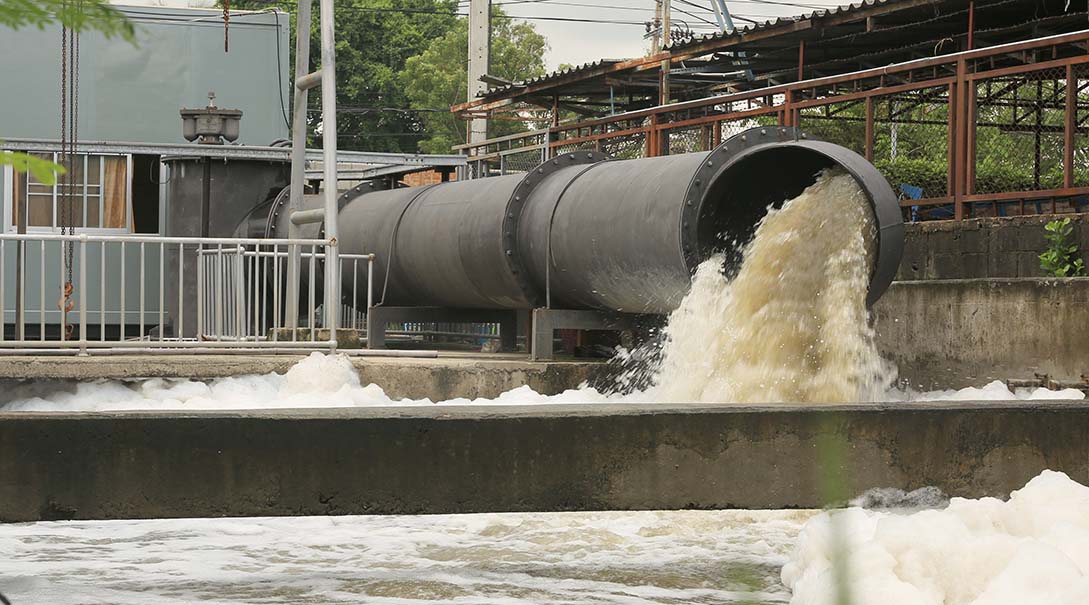Having a Stormwater Pollution Prevention Plan, otherwise known as SWPPP, accessible to employees is crucial in the event of issues with wastewater and pollutants. Any company processing waste of any type, especially construction sites, can utilize these plans to provide workers with the steps necessary to avoid potential spills or incidents or properly deal with situations as they arise.
SWPPP plans also improve water quality by regulating facilities that discharge water with some pollutants. Not only will it enhance the quality of water, but SWPPP’s help eliminate waste and minimize stormwater pollution that occurs naturally. SWPPP can benefit the environment and companies looking to clean up their waste, avoid further pollution, and prevent costly penalties and fines.
Table of Contents
What Is a Stormwater Pollution Prevention Plan (SWPPP)?
SWPPP began being required alongside the 1972 amendments to the Clean Water Act. SWPPP helps identify potential pollutants and protects surrounding water treatment plants and ecosystems that pollutants may impact that a construction site could release.
SWPPP is a control plan for construction sites that helps outline how a facility will minimize its pollutants and waste while maintaining Best Management Practices (BMP). An SWPPP aims to help the Environmental Protection Agency (EPA) regularly regulate facilities producing waste and water pollutants.
SWPPP Certification and Permitting
SWPPP is required for any facility looking to get a National Pollutant Discharge Elimination System (NPDES) Permit. Getting this permit is necessary for any facility that produces waste of any sort, as it will protect them as they have to provide a list of the different types of pollutants they produce.
If a construction project ends up disturbing more than one acre of land, the company must have an SWPPP and permit by the City or State. Therefore, before construction can begin, the company must create an SWPPP and receive the required permits to ensure limited pollution and disruption to the surrounding ecosystems.
By obtaining an SWPPP, companies adhere to local and federal government regulations that have been put into place. To ethically and safely continue construction, they must create an SWPPP to get the necessary permits and certifications.
SWPPP Requirements
Companies must meet many stormwater pollution prevention plan requirements before granting a permit. These requirements set out to ensure that pollutants and stormwater runoff are safe and leave the construction site without damaging the surrounding ecosystem. Although this list is not long, providing all these details is necessary to have a valid SWPPP.
- A Site Description (Description Of Activities Performed There)
- Names And Duties Of The Pollution Prevention Team
- Descriptions Of Activities Performed That Could Cause Any Pollution
- Measures For Preventing Spills And Minimizing Potential Hazards
- Response Plans For Spills
- Procedures For Doing Inspections And Monitoring Of The Systems
- Employee Training
Developing an SWPPP Plan
An SWPPP should have all of the elements listed above to be comprehensive and accepted by the EPA. Before developing an SWPPP plan, it is important to evaluate the construction site.
The SWPPP needs to include details about the specific site, including features of the land and potential pollutants. Understanding these features can end up helping a company understand how to prevent pollutants from infiltrating the surrounding systems.
To develop an SWPPP, you will also need to be aware of the surrounding water systems. There should be a clear layout of the surrounding water systems that lead to and away from the construction site.
Understanding where this stormwater will go can help protect that destination from acquiring pollutants from the construction site. Often, companies will develop a site map to know where potential pollutants could come from and where these pollutants could be disposed of unsafely.
A description of the construction project is also important when developing an SWPPP and should include:
- the project type,
- location,
- start dates,
- end dates,
- the timing of activities,
- project size,
- soil types,
- runoff, and
- any nearby water locations
Providing this information will enhance the plan and give the EPA a better understanding of the project as a whole before providing permitting.
The final feature to add to an SWPPP is the identification of pollutants and pollution sources. Throughout a construction site, several potential pollutants could be identified. If not cared for properly, they can seep into the surrounding water sources creating distress for the local environment and ecosystems.
These pollutants can include:
- nutrients,
- heavy metals,
- organic compounds,
- pesticides,
- oil and grease,
- bacteria and viruses,
- trash and debris, and
- other chemicals
These could all be potentially dangerous if not properly taken care of and disposed of
Benefits of Working with Trained Professionals
The health and well-being of your workers, your construction site, and your business are crucial. Working with professionals to develop a customized Stormwater Pollution Prevent Plan will help create safeguards and procedures to help identify risks, prevent injury, and reduce unnecessary costs.
AOTC offers environmental engineering, consulting, and remediation services to keep your workplace safe. Our years of experience in the fields allow us to identify the risks that will impact your company and develop a customized plan to meet your specified needs. We can also assist with permitting and processes to create efficiencies and expedite your project. Contact us today to get a free quote.
